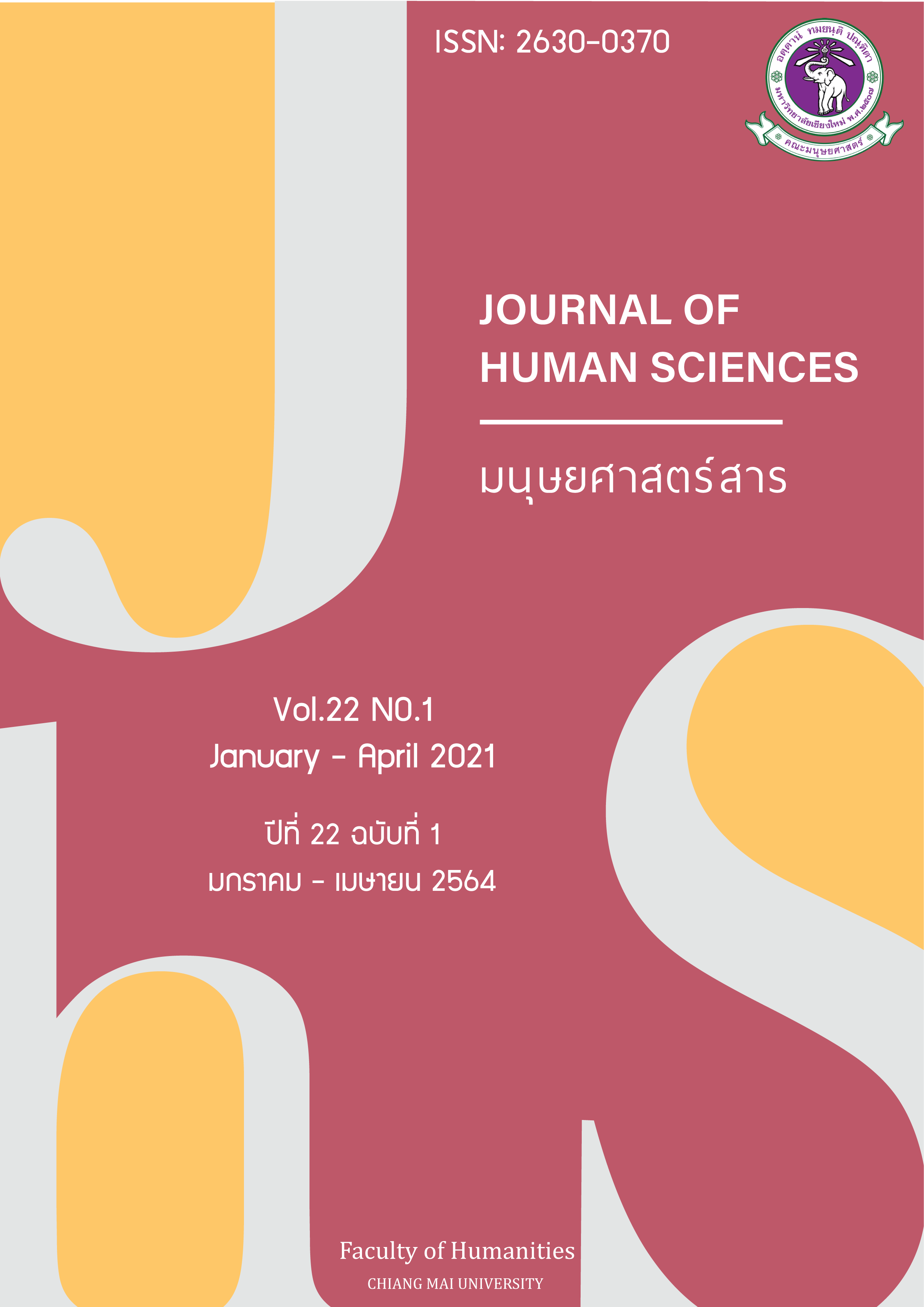การศึกษาแนวทางการจดบันทึกในงานล่ามจีน-ไทย ไทย-จีนในส่วนที่เกี่ยวข้องกับตัวเลข
Main Article Content
บทคัดย่อ
ในการปฏิบัติงานล่ามภาษาใดๆ ก็ตาม จำเป็นต้องอาศัยการจดบันทึกเพื่อช่วยในการปฏิบัติงาน ซึ่งข้อมูลสำคัญประเภทหนึ่งที่ควรจดบันทึกในงานล่าม คือข้อมูลด้านตัวเลขซึ่งเป็นข้อมูลที่ต้องการความแม่นยำสูง ไม่ควรเกิดความผิดพลาดในการถ่ายทอด บทความวิจัยนี้มีวัตถุประสงค์เพื่อพัฒนาแนวทางการจดบันทึกในการล่ามจีน-ไทย ไทย-จีน ในส่วนที่เกี่ยวข้องกับตัวเลข พร้อมกับศึกษาความแตกต่างของตัวเลขภาษาจีนกับภาษาไทยซึ่งส่งผลต่อการปฏิบัติงานล่ามจีน-ไทย ไทย-จีน โดยมุ่งให้เกิดประโยชน์ต่อการสอนวิชาล่ามจีน-ไทย ไทย-จีนต่อไป โดยผู้วิจัยได้นำแนวคิดเกี่ยวกับการจดบันทึกเพื่อการล่ามและความแตกต่างระหว่างตัวเลขภาษาจีนกับภาษาไทยมาเป็นเครื่องมือในการสร้างแนวทางการจดบันทึกและวิธีการฝึกฝนการแปลแบบล่ามในส่วนที่เกี่ยวข้องกับตัวเลข และนำไปใช้กับผู้เรียนวิชาภาษาจีนเพื่อการล่ามในธุรกิจ จากนั้นนำผลมาปรับปรุงแนวทางการจดบันทึกเพื่อการล่ามและวิธีการฝึกฝน ผลการศึกษาพบว่าการสร้างตารางเพื่อช่วยในการแปลงฐานเลขและการฝึกฝนคำนวณและแปลกลับไปกลับมาระหว่างภาษาจีนกับภาษาไทยช่วยให้ความผิดพลาดในการแปลแบบล่ามมีประสิทธิภาพมากขึ้น แต่ผู้เรียนส่วนหนึ่งมีปัญหาการคิดเลขและมีความสับสนในเรื่องวิธีการคำนวณ สิ่งที่สำคัญในการฝึกฝนคือการปรับทัศนคติของผู้เรียนซึ่งปฏิเสธสิ่งที่เกี่ยวข้องกับตัวเลข โดยต้องชี้ให้เห็นว่า ตัวเลขที่ใช้ในงานล่ามเป็นเรื่องที่หลีกเลี่ยงไม่ได้ แต่สามารถลดความผิดพลาดให้น้อยที่สุดได้โดยการฝึกฝนตามแนวทางการจดบันทึกและวิธีการฝึกฝนข้างต้น
Article Details
เอกสารอ้างอิง
Chanprapun, S. (2016). Kan plæ tualek nai kan lam kan prachum Thai- Angkrit [Interpreting Numbers in Thai-English Conference Interpreting]. Journal of Language and Linguistics, 35(1). 66-77.
Gao, L & Lin, Y. (1996). A Course of English-Chinese / Chinese- English Interpreting. Fuzhou: Fujian People’s Publishing house.
Lei, T. & Chen, J. (2006). Challenging Interpreting: A Coursebook of Interpreting Skills. Shanghai: Shanghai Foreign Language Education Press.
Numtong, K. (2011). Tamra kan plæ phasa Thai pen phasa Chin [A Coursebook of Translating Thai Language to Chinese Language]. Bangkok: Confucius Institute at Kasetsart University.
Numtong, K. & Likhidcharoentham, S. (2019). Lak læ kho̜ khuan rawang nai kan plæ Chin - Thai Thai - Chin [Principles and Precautions in Translating Chinese to Thai Language and Thai to Chinese Language]. Chinese Studies Journal, 12(2). 105-151.
Pöchhacker, F. (2010). Introducing to Interpretation Studies (Zhong W., Trans.). Beijing: Foreign Language Teaching and Research Press.
Sun, Y. (2009). A Basic Course in English-Chinese / Chinese-English Interpretation. Beijing: University of International Business and Economic Press.
Tuntirattanasoontorn, B. (2009). Lam achip [Professional Interpretation]. Bangkok: Baan Phra Arthit.
Yang, C. (2005). Interpretation Study: Theory and Practice. Beijing: China Translation.
Zhang, W. & Han, C. (2006). Theoretical Studies on Oral Interpretation. Beijing: Science Press.
Zhong, Y. (2002). The Impact of Note-taking on English to Chinese Consecutive Interpreting’s Quality. In Cai, X. A New Study of Interpretation: New Methods, New Concepts, New Trend. Hong Kong: Maison d’ éditions Quaille


